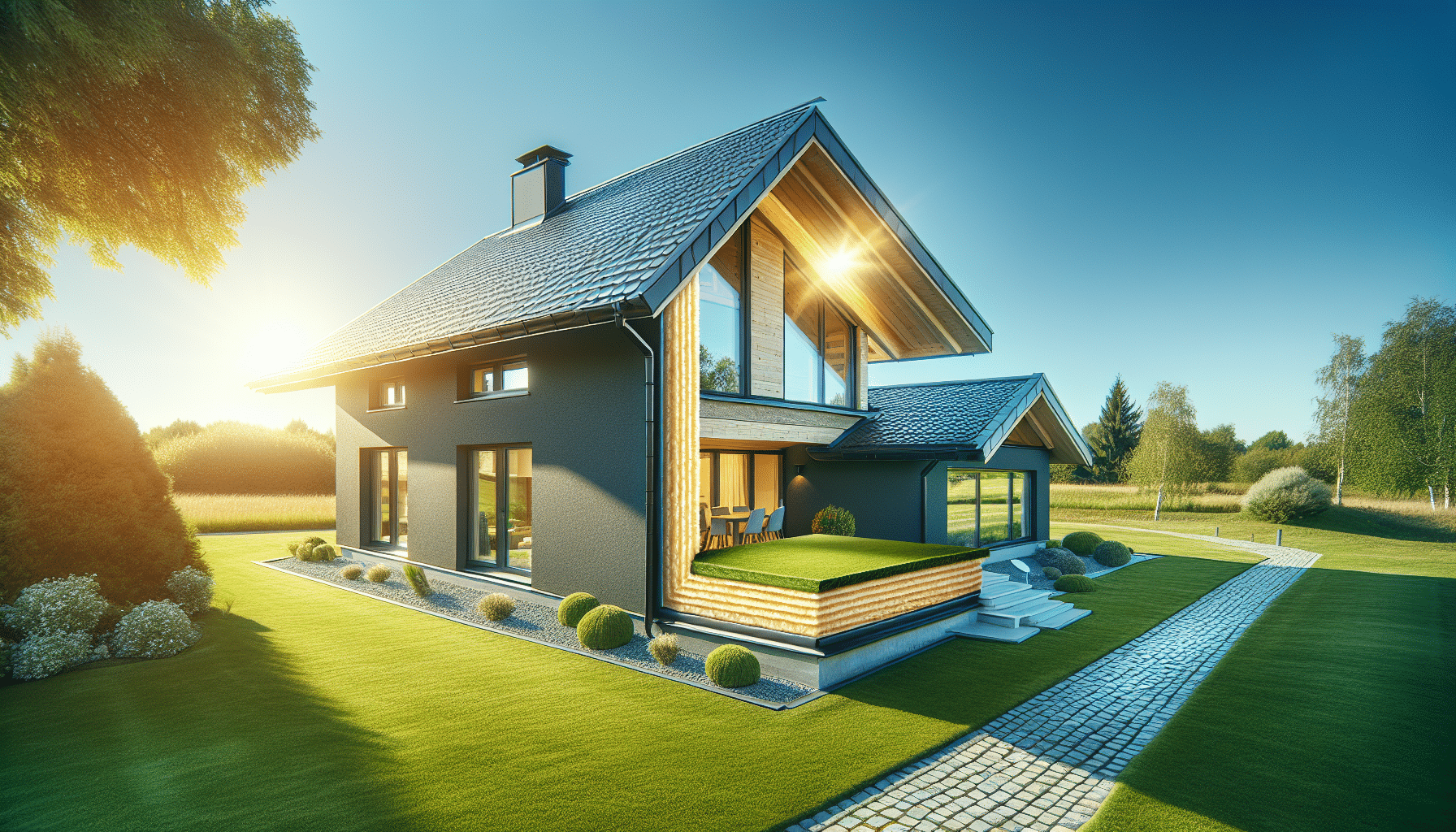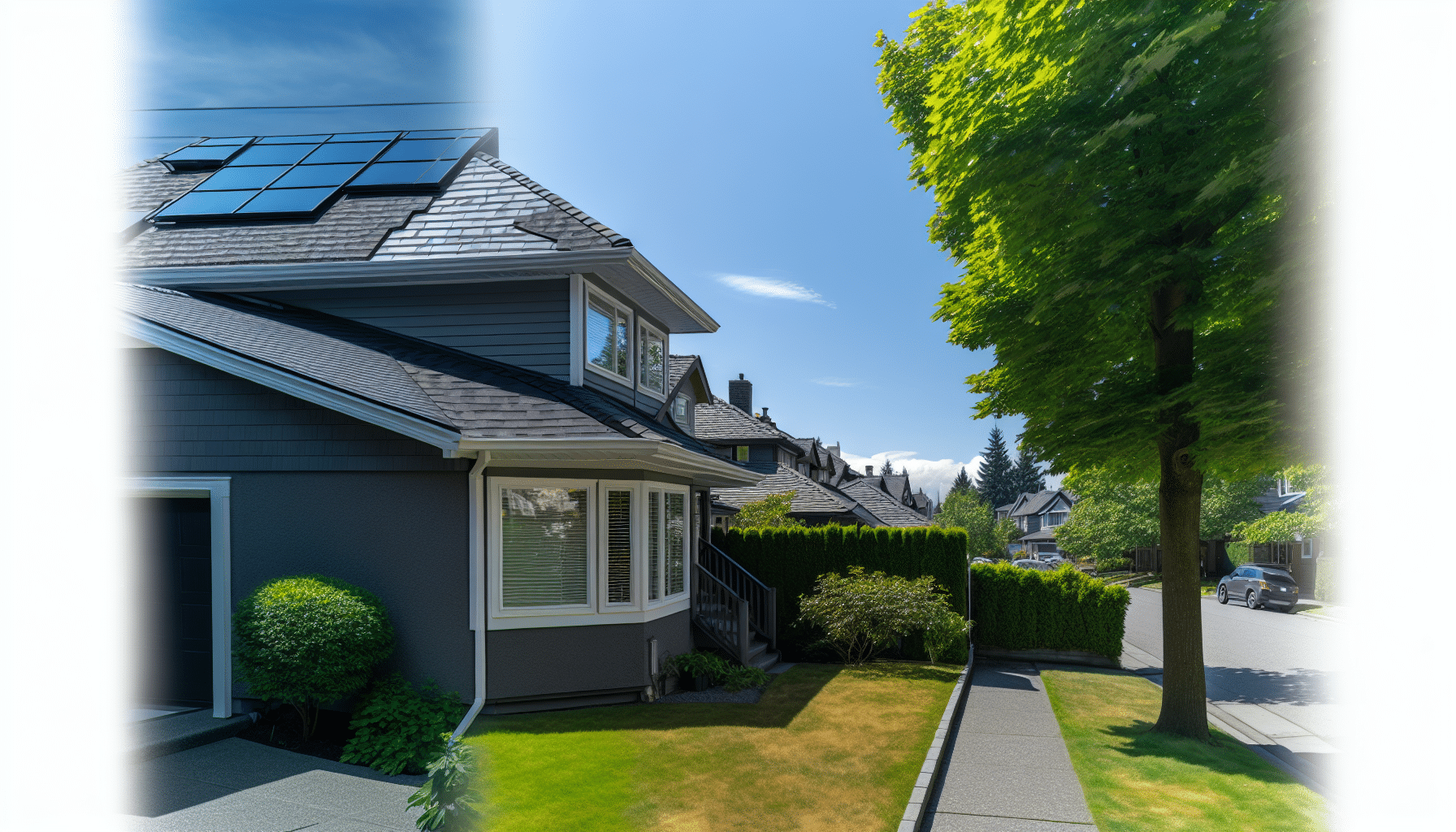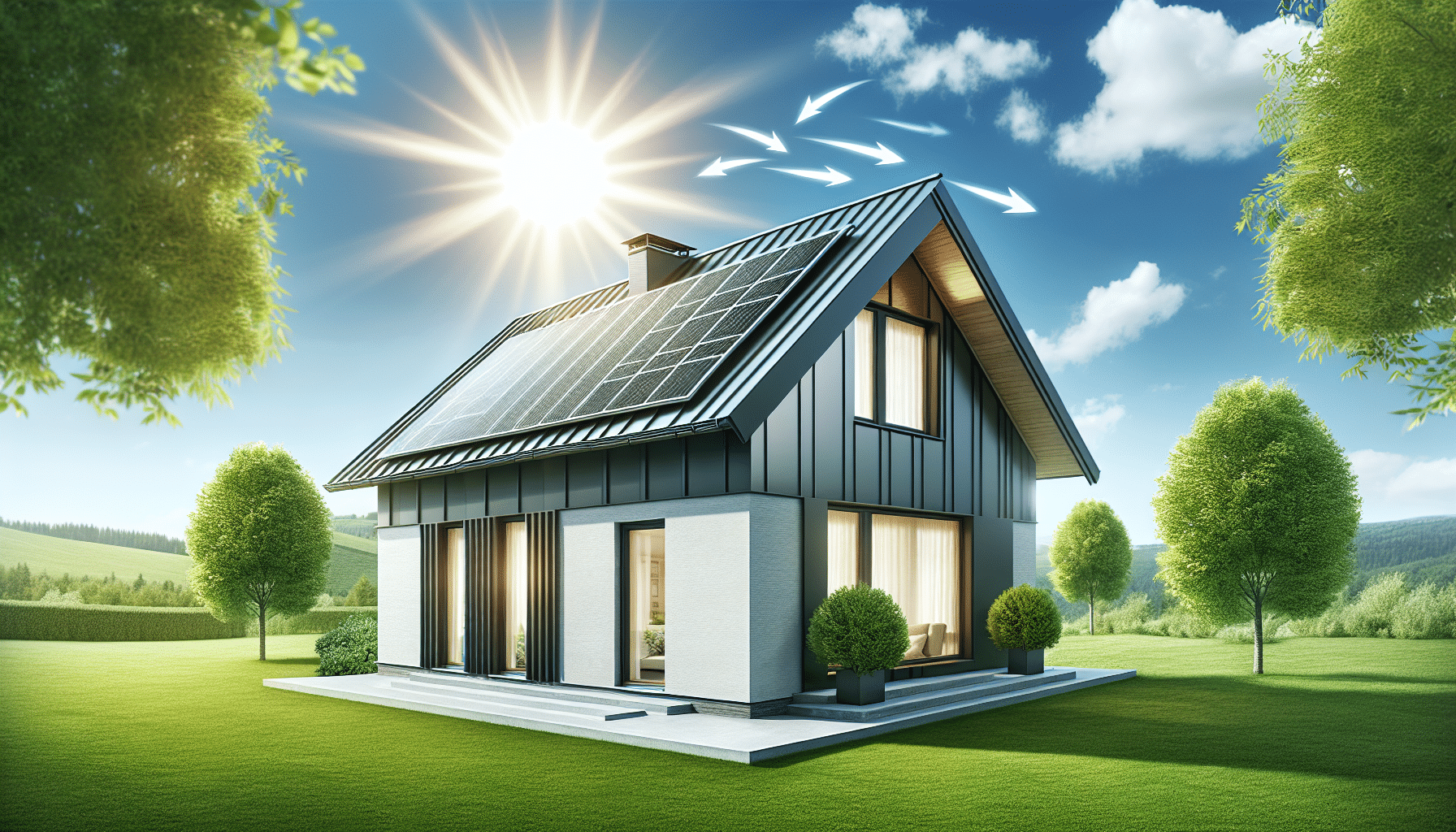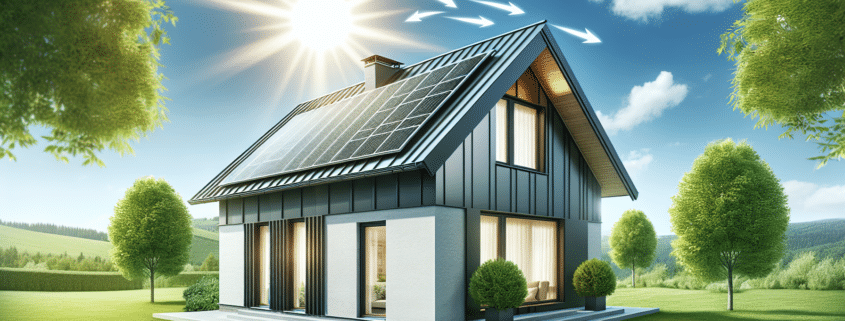Does a New Roof Help with Heating and Cooling? Uncovering Energy Savings Potential
Does a new roof help with heating and cooling? The short answer is yes. A new roof can play a vital role in regulating your home’s temperature, contributing to both warmth in winter and coolness in summer while also potentially shaving dollars off your energy bills. This article will delve into the hows and whys, giving you informed insights into the advantages of roofing for better home energy management.
Key Takeaways
-
A new roof improves home energy efficiency by enhancing insulation, ventilation, and solar reflection, helping to maintain comfortable indoor temperatures year-round and reduce heating and cooling costs.
-
Incorporating modern roofing materials like reflective shingles and ensuring proper attic ventilation are crucial for reducing energy consumption and maximizing the efficiency of heating and cooling systems.
-
Choosing an experienced contractor, like a GAF MasterElite Contractor, is vital for ensuring proper roof installation and leveraging warranties that enhance long-term energy savings and roofing performance.
The Impact of a New Roof on Your Home’s Energy Efficiency

You may ask yourself, “In what ways can a roof enhance my home’s energy efficiency?” The answer lies in the three key factors that a new roof can significantly improve: insulation, ventilation, and solar reflection. Essentially, the right roof can serve as a powerful barrier against heat loss in the winter and heat gain in the summer. It’s like putting a cozy blanket over your home that keeps you warm when it’s cold and cool when it’s hot.
The question then is, how does a new roof achieve this? It all comes down to the materials chosen and their installation. Modern energy-efficient roofing materials, such as:
-
Solar roofing shingles
-
Tile roofing
These materials are designed to provide superior insulation and reflect the sun’s solar heat, keeping your home cooler and reducing your air conditioning costs.
Moreover, maintaining proper attic ventilation is vital in sustaining a balanced temperature within your home, thereby boosting its energy efficiency.
Enhanced Insulation with Modern Roofing Materials
Modern roofing materials are more than just sturdy coverings for your home. They’re designed with energy efficiency in mind, providing excellent insulation that keeps your indoor temperature comfortable all year round. These materials, such as reflective metal roofs, minimize heat absorption, reducing your cooling costs and revolutionizing your home’s insulation.
But the benefits don’t stop there. Modern insulated roofing materials also offer:
-
Significant energy savings and improved efficiency by limiting heat transfer
-
Effective control of moisture accumulation
-
Prevention of hot air from entering your home
Insulated roofing is an excellent choice for energy-conscious homeowners, as cold weather areas benefit from the added insulation, which contributes to the roof’s energy efficiency.
So, when it comes to selecting roofing materials for your new energy-efficient roof, consider materials like:
-
SIPS
-
Fiberglass batts
-
Spray Foam Insulation
-
Structural Insulated Panels
-
High-Density Polyiso Cover Boards
The Role of Proper Ventilation in Regulating Attic Temperature
It may not be immediately evident, but your attic significantly influences your home’s energy efficiency. Without proper ventilation, heat can build up, making your heating and cooling system work harder and causing your energy bills to skyrocket. A well-ventilated attic allows for continuous air circulation, carrying away heat and keeping your living spaces comfortable. This helps extend the lifespan of your roof and regulate your home’s temperature, leading to a more energy-efficient and comfortable living space.
So, what can be done to maintain proper attic ventilation? One of the best methods is to install attic vents. They help reduce cooling bills, extend the life of shingles, and can prevent issues like roof rot and the formation of ice dams in colder months. So, if you’re considering a new roof, make sure to factor in proper attic ventilation to maximize your energy savings.
Reflective Shingles and Their Effect on Surface Temperature

Ever pondered why certain houses remain chillier during the sweltering summer heat compared to others? The answer could be in the shingles. Energy efficient shingles, also known as reflective shingles, are designed to enhance your home’s energy efficiency by reducing the cooling load and air-conditioning costs on sunny days. They reflect a significant amount of sunlight, preventing it from permeating the shingles and reducing heat absorption.
The impact of reflective shingles on air conditioning is truly remarkable. By lowering the surface temperature of the roof, they reduce the need for air conditioning, ultimately leading to significant energy savings. In fact, they can lead to an estimated average of between 7% and 15% reduction in cooling costs for buildings with air conditioning. Now that’s a game-changer!
Maximizing Heating and Cooling Systems with a New Roof
Not only does the roof keep your home insulated, but it also significantly affects the efficiency of your heating and cooling systems. A new roof can maximize the efficiency of these systems by improving insulation and reflecting sunlight. Reflective roofing materials, for example, reflect solar radiation, minimizing heat absorption, and reducing thermal expansion and contraction. This ultimately decreases your reliance on heating and cooling systems, saving you a significant amount on energy costs.
However, the state of your roof holds importance too. A well-maintained roof contributes to air conditioning efficiency by ensuring proper ventilation to cool down the attic and maintain proper insulation to keep excessive heat at bay inside your home. So, if you’re looking to maximize your heating and cooling systems’ efficiency, consider a new roof as a key part of your strategy.
The Link Between Roof Condition and Air Conditioning Efficiency
It may come as a surprise that the state of your roof greatly affects the efficiency of your air conditioning. A roof in poor condition can lead to increased energy consumption, while a well-maintained roof can help your air conditioning system operate at its peak efficiency.
Choosing high-quality siding and ensuring proper installation can create an additional insulating layer for your home. This reduces heat transfer, leading to improved energy efficiency and significantly increased indoor comfort levels. When paired with a well-insulated roof, the impact on your energy efficiency can be dramatic.
How Light Colored Roofs Contribute to Cooling Costs Reduction

In terms of lowering cooling expenses, the color of your roof could be a game-changer. Light-colored roofs reflect more sunlight and absorb less heat than dark-colored roofs, which means they can help keep your home cooler in hot weather. This can lead to substantial savings on your cooling costs, especially in hot climates where air conditioning is a must.
Light-colored roofs work by lowering the building temperature, minimizing heat transfer, and reducing the energy consumption for air conditioning. So, if you’re looking to cut down on your energy costs, consider going for a lighter colored roof. It’s a simple change that can make a big difference in your home’s energy efficiency.
Storm Damage and Energy Loss: A Case for Timely Roof Replacement
Storm damage can wreak havoc on your home’s energy efficiency. Strong winds, hail, and heavy rain can cause significant damage to your roof, leading to energy loss and higher energy bills. That’s why it’s essential to get your roof inspected and replaced if necessary after a storm.
A new or repaired roof can work wonders for your air conditioning efficiency. It can:
-
Ensure proper ventilation to cool down the attic
-
Introduce a new rooftop unit to boost HVAC efficiency
-
Maintain proper insulation to keep excessive heat at bay inside your home
So, if you’ve recently experienced a storm, it’s worth considering a roof replacement to maintain your home’s energy efficiency.
Identifying Hidden Energy Leaks Post-Storm
Following a storm, it becomes imperative to spot and rectify hidden energy leaks in your home to preserve its energy efficiency. These leaks may not be immediately visible, but they can have a significant impact on your energy consumption and utility bills. Common signs of hidden energy leaks include:
-
Water stains
-
Damp or moldy odors
-
Peeling paint
-
Sagging or warped roof decking
Addressing these leaks promptly can help you maintain your home’s energy efficiency and save on energy costs. It’s also worth noting that different roofing materials have different resistance levels to storm damage. So, when choosing roofing materials for your new roof, consider their resistance to storm damage as well as their energy efficiency.
Siding Installation and Its Influence on Home Energy Efficiency
Although roofing significantly affects your home’s energy efficiency, the influence of siding installation on your home’s energy performance should not be overlooked. Just like roofing, siding can serve as a barrier against heat loss in the winter and heat gain in the summer, contributing to energy savings.
By installing or replacing siding, you can:
-
Prevent energy loss
-
Reduce air infiltration
-
Improve insulation
-
Lead to significant energy cost savings
When combined with roofing, this creates a powerful barrier that seals the home and enhances its thermal performance, maximizing energy efficiency.
Synergy Between Roofing and Siding for Maximum Energy Savings

Maximizing energy savings does not merely entail selecting the right roofing or siding material. The synergy between these two components is equally important to save energy. The synergy of roofing and siding enhances insulation and minimizes heat transfer, leading to a more consistent indoor temperature and reduced reliance on heating and cooling systems.
Properly installed roofing and siding can work together to create an energy-efficient envelope for your home. This not only reduces the need for excessive heating and cooling but also significantly lowers your energy costs. So, when planning a home improvement project, consider both roofing and siding for maximum energy savings.
Innovative Siding Materials That Boost Energy Efficiency
Just like roofing, siding materials have come a long way in terms of energy efficiency. Innovative siding materials such as insulated vinyl, fiber cement, and wood can significantly enhance a home’s energy efficiency by improving insulation and reducing heat transfer.
Some types of siding that can help improve insulation and reduce energy loss include:
-
Insulated vinyl siding, which enhances thermal resistance, reduces heat flow within the wall assembly, and provides superior durability, ensuring sustained insulation performance over time.
-
Fiber cement siding, which maintains stable indoor temperatures, reducing the need for constant heating or cooling.
-
Wood siding, which has natural insulation properties and helps reduce energy loss, making homes warmer in winter and cooler in summer.
Choosing the Right Contractor for an Energy Efficient Roof

Just as it is vital to select the right materials, choosing the appropriate contractor is essential to attain an energy-efficient roof. The right contractor will have the experience and expertise to guide you in choosing the best materials for your specific needs and climate. They’ll also ensure proper installation, which is critical for maximizing energy efficiency.
Rapid Roofing, a GAF MasterElite Contractor, is an excellent choice for your roofing needs. Here’s why:
-
We specialize in energy-efficient roofing
-
We provide comprehensive solutions
-
We deliver high-quality, energy-efficient roofs
-
We can meet your needs and budget
You can trust Rapid Roofing to provide the best roofing solution for you.
GAF MasterElite Contractor: What It Means for Your Energy Efficient Roof
You may question, “What does being a GAF MasterElite Contractor entail, and why should I opt for one for my roofing project?” A GAF MasterElite Contractor is part of an elite group of roofing contractors recognized for their outstanding craftsmanship, professional reliability, and ability to offer the best warranties in the industry.
Choosing a GAF MasterElite Contractor like Rapid Roofing means you’re getting a contractor who uses top-quality GAF materials specifically crafted to reflect heat and UV rays, ultimately contributing to the energy efficiency of your building. Their strong warranties provide coverage against manufacturing defects and misapplication, ensuring a high-quality and energy-efficient roofing solution.
Virtual Inspections and Consultations: Adapting to Modern Needs
With the digital age upon us, virtual inspections and consultations are gaining popularity rapidly. Rapid Roofing offers virtual inspections and consultations, adapting to modern needs and ensuring a contact-free experience. This allows for:
-
A comprehensive assessment of the roof’s condition
-
Valuable insights into potential energy leaks
-
Ensuring the best energy efficiency through proper installation practices.
Cutting-edge technologies like drone roof inspection software and aerial imagery are used to provide detailed and comprehensive visual assessments of roofing conditions. This unique perspective empowers precise planning and execution of energy-efficient roofing materials installation and identification of areas requiring energy efficiency enhancements.
Summary
In conclusion, a new roof can provide significant enhancements to your home’s energy efficiency. By choosing the right roofing materials and ensuring proper installation, you can reduce your energy consumption, lower your heating and cooling costs, and improve your overall comfort. Furthermore, timely roof replacement after storm damage and the installation of energy-efficient siding can further boost your home’s energy performance.
Choosing the right contractor is equally important. As a GAF MasterElite Contractor, Rapid Roofing offers top-quality materials, expert installation, and strong warranties, ensuring a high-quality, energy-efficient roof that meets your needs and budget. With their virtual inspections and consultations, you can enjoy a comprehensive, contact-free experience. So, when it comes to improving your home’s energy efficiency, a new roof is a smart investment.
Frequently Asked Questions
Does a new roof make the house warmer?
Yes, a new roof can make your house warmer by absorbing more heat from the sun, keeping it more comfortable during cold winters.
Does a new roof help keep house cool?
Yes, a new roof can help keep your house cool, especially if you choose light-colored or reflective roofing materials to reflect sunlight and heat. This will contribute to a cooler indoor temperature.
How much energy does a new roof save?
A new roof with a high Solar Reflectance Index can save 15–20% on your energy bill by reflecting the sun’s radiation away from the house. Invest in an energy-efficient roof to enjoy significant savings on your energy costs.
What are some modern roofing materials that can enhance insulation?
Consider using reflective metal roofs, asphalt shingles, solar roofing shingles, or tile roofing for enhanced insulation. These modern materials can significantly improve the energy efficiency of your home.
How does proper attic ventilation contribute to my home’s energy efficiency?
Proper attic ventilation prevents heat buildup, reducing the need for air conditioning and making your home more energy-efficient and comfortable.


 Residential Roofing
Residential Roofing Storm Damage
Storm Damage Multi-Family Homes
Multi-Family Homes
